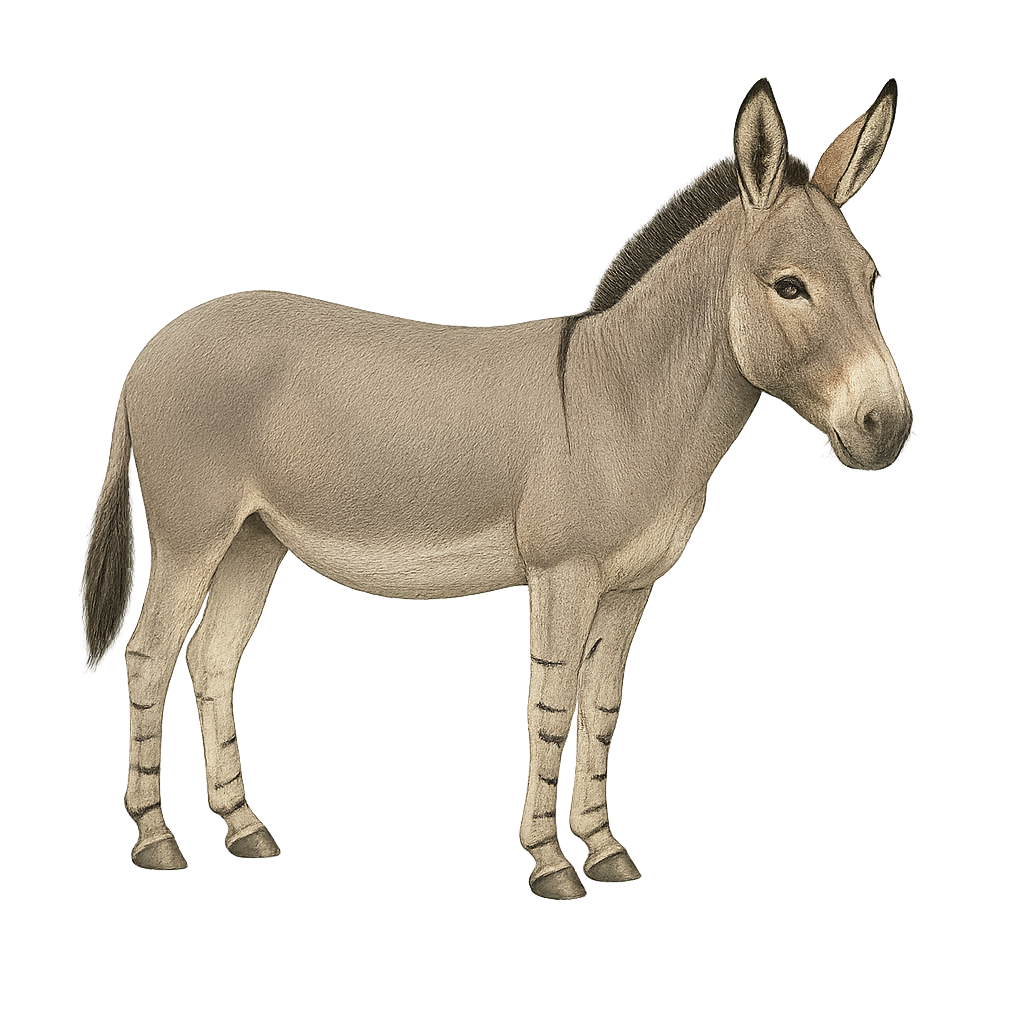Your wildlife photography guide.
Explore the african wild ass in detail, study its behavior, prepare your shots.
Where to observe and photograph the african wild ass in the wild
Learn where and when to spot the african wild ass in the wild, how to identify the species based on distinctive features, and what natural environments it inhabits. The WildlifePhotographer app offers tailored photography tips that reflect the african wild ass’s behavior, helping you capture better wildlife images. Explore the full species profile for key information including description, habitat, active periods, and approach techniques.
African Wild Ass
Scientific name: Equus africanus

IUCN Status: Critically Endangered
Family: EQUIDAE
Group: Mammals
Sensitivity to human approach: Suspicious
Minimum approach distance: 50 m
Rut period: October to November
Gestation: 360-370 jours
Births: October to November
Habitat:
Deserts, savannas, steppes
Activity period :
Primarily active during the day, with peak activity in the morning and late afternoon.
Identification and description:
The African Wild Ass, or Equus africanus, is a species of equid native to the arid and semi-arid regions of East and Northeast Africa. It is the wild ancestor of the domestic donkey. This mammal is well adapted to its harsh environment, capable of surviving with minimal water and food. It has a light grey coat with black stripes on its legs, reminiscent of a zebra. Its long, mobile ears allow it to detect predators from a distance. The African Wild Ass lives in small family groups and primarily feeds on grasses and shrubs. Unfortunately, it is critically endangered due to hunting and habitat loss.
Recommended lens:
400 mm – adjust based on distance, desired framing (portrait or habitat), and approach conditions.
Photography tips:
To photograph the African Wild Ass, it is advisable to use a telephoto lens of at least 400mm to capture detailed images from a distance without disturbing the animal. The best times for photography are early morning or late afternoon when the light is soft and golden. Be patient and discreet, wearing neutral-colored clothing to blend into the environment. Observing the animal's behavior can also provide unique capture opportunities.
The WildlifePhotographer App is coming soon!
Be the first to explore the best nature spots, track rutting seasons, log your observations, and observe more wildlife.
Already 1 439 wildlife lovers subscribed worldwide

